 State
St. to Broadway - "South Main"
State
St. to Broadway - "South Main"
The
Flood of July 24 1878

COURTESY
OF SEAN LOGAN • CLICK ON IMAGE FOR A
BIG VIEW IN A NEW WINDOW
|
An unusually
heavy rainstorm, during an already wet summer, sparked a flash
flood that raged down the gulch, flooding basements and first-story
rooms. Mud and rock slides damaged homes and gardens.
At the
time, the only means of directing the flow of Last Chance
Creek through town and toward the valley was a wooden flume
- which proved wholly inadequate to handle such a rise in
water. Still, a box flume was in operation until at least
1884. A large brick-lined underground tunnel was eventually
built, which more or less followed the course of the old flume.
Your editor knows, because as a boy I went down into the tunnel
on West Main street, and walked it all the way north past
Neill Avenue.
Click
on the Daily Independent story below to read all about the
flood, in pdf format...
|
1878
Flood Story

|
Course of the Wooden Flume, 1884

|
1890s
South Main Street Parade

COURTESY OF THE RAY and PHIL JEZICK COLLECTION & THE HELENA
FIRE DEPARTMENT
CLICK ON THE IMAGE FOR A BIG VIEW IN A NEW
WINDOW
|
A Helena
Fire Department ladder wagon is seen passing in front of the
Loeb & Brother tailor shop at 35 South Main Street. Click
on the image above to open a big view in a new window.
1877 Loeb & Brother newspaper ad

In
the big view, one can see various 1890s South Main businesses.
One door to the south (viewer's right) of Loeb & Brother
is a barber shop and bath house. Next, at 39 South Main, is
the Cosmopolitan
Hotel, with numerous parade-watchers gathered on the balcony.
Farther south, at 45 South Main, we can see the shingle of
cigar manufacturer Swend Carlson (1854-1932). His obituary
is found below this amusing 1894 newspaper ad for his business...

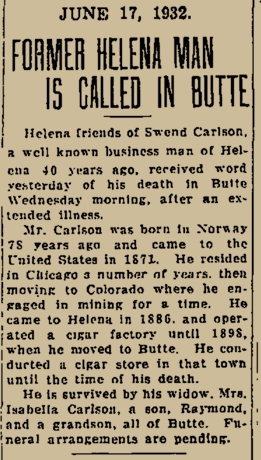
|
Last
Chance Gulch, 1890s, looking south from Broadway
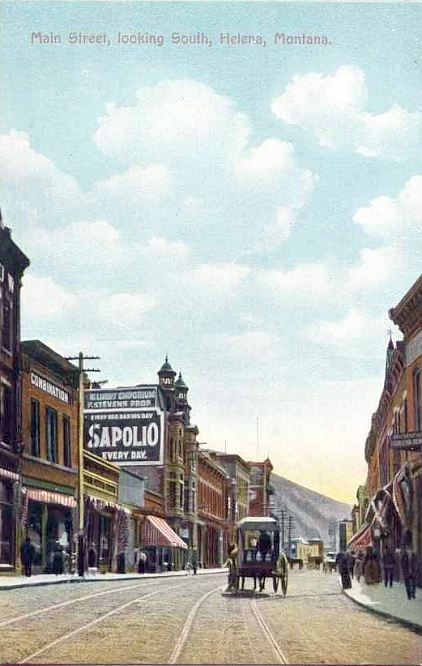
| Advertised
on the side of the Novelty Block (now demolished) is Sapolio
Soap. Sapolio, started in 1868 in New York City by Enoch Morgan
& Sons, was a pioneering company in the use of mass-marketing,
hence this sign. The brand is still in existence today -- in
Peru. The Sapolio sign was eventually replaced by one for Coca-Cola,
which remained on the building until it was demolished in the
1970s. |
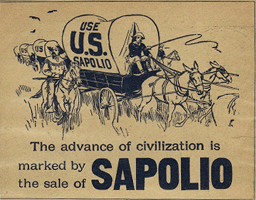
1915
South Main Parade
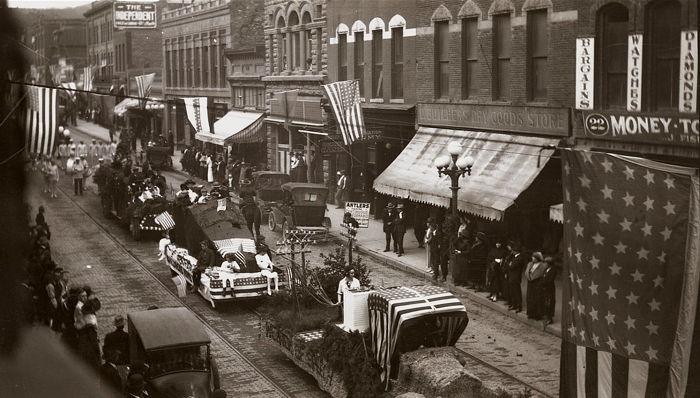
COURTESY
OF THE RAY and PHIL JEZICK COLLECTION & THE HELENA FIRE DEPARTMENT
CLICK ON THE IMAGE FOR A BIG VIEW IN A NEW
WINDOW
Looking
South from the Atlas Block, 1920s
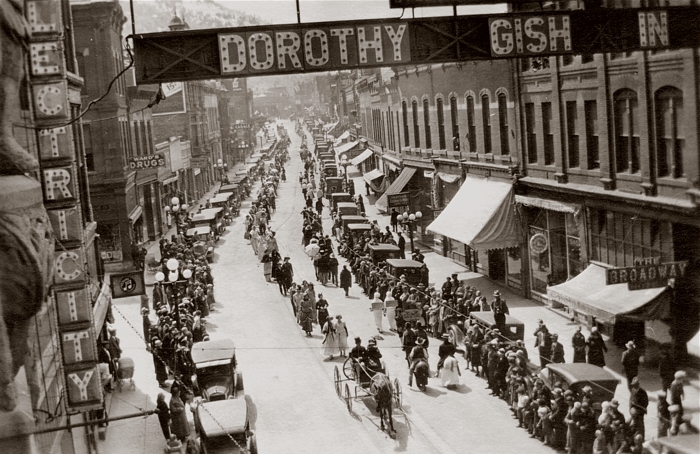
COURTESY
OF TOM MULVANEY • CLICK ON IMAGE
FOR A LARGE VERSION IN A NEW WINDOW
Composite
Image Created From Three circa 1937 Vigilante Parade Photos
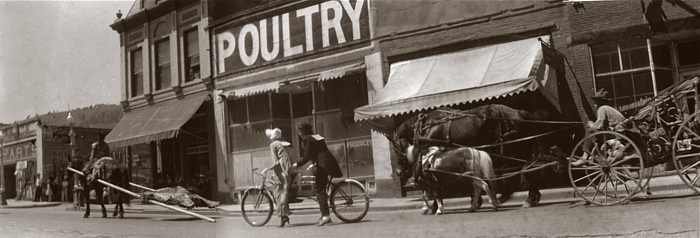
ORIGINAL
PHOTOS FROM THE WES AND CAROL SYNNESS COLLECTION
CLICK
ON IMAGE FOR A LARGE VERSION IN A NEW WINDOW
| Composite
view of South Main storefronts and Vigilante Parade entrants,
circa 1937. Carol Synness emailed three parade photos to me,
and I combined them with a photo-stitching program. The resulting
image puts the parade riders out-of-synch timewise, but it does
give us a good look at the storefronts on South Main, just north
of Wall Street. The distincive Colwell Building is seen on the
corner of Main and Wall. Wall St. was eliminated in the 1970s
by the federal Urban Renewal Program. |
1938
Vigilante Parade on South Main
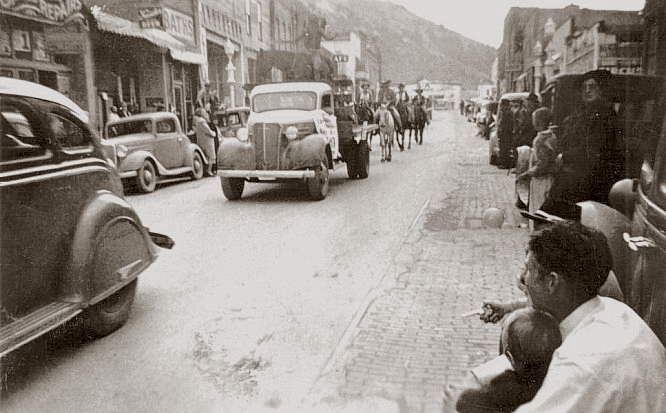
PHOTO
BY RUTH LYNCH • THE WES AND CAROL SYNNESS COLLECTION
|
This photo is courtesy of Carol Lynch Synness, whose family
operated the New Cash Market at 58 South Main. Here, she is
being held by her uncle, John Lynch. |
Parade
on South Main, 1939
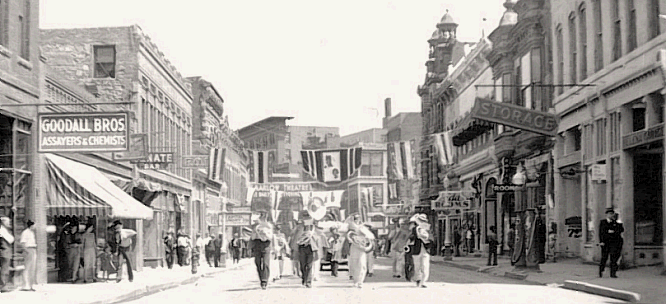
THE
WES AND CAROL SYNNESS COLLECTION
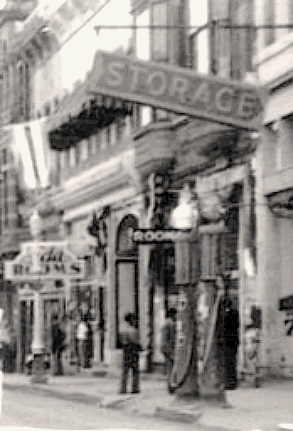
| A
detail from the above image, showing gasoline pumps and rooming
houses on the east side of South Main. Ids'a Rooms (see sign)
was a noted bordello. |
Sisters
Carol and Kay Lynch watching the parade, 1939
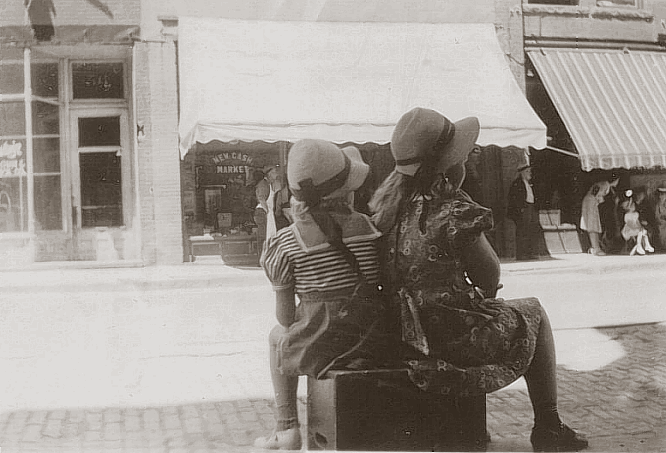
THE
WES AND CAROL SYNNESS COLLECTION
| . Across
the street is the New Cash Market, which the Lynch family
operated. The man wearing the apron is Leonard Franks, a partner
in the business. |
Go
back to LAST CHANCE GULCH • MAIN ST.

|


















